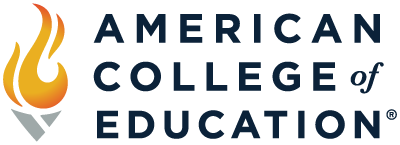
It was a “deer-in-headlights” moment for sure–my first job interview in a new state, and I was trying to keep my composure as I fumbled through my interviewer’s opening question.
“So, tell me what you know about the Math Workshop?”
Also known as Guided Math, the Math Workshop model combines direct instruction with hands-on and student-centered learning opportunities. The workshop begins with a mini-lesson delivered by the teacher, followed by a large block of time devoted to small group learning. It ends with a brief closure activity, or summary.
The goal of the Math Workshop model is to promote differentiation, engagement, and collaborative learning, but the many moving parts and high levels of student autonomy can be intimidating for teachers who may only be vaguely familiar with the term from teacher blogs and Pinterest (i.e. me during that interview).
From someone who has gone from novice to veteran, here are a few ways to integrate the Math Workshop model into your own elementary school classroom.
Setting the Scene in the Classroom
If you were to step into my classroom during a workshop, you would first see a set of objectives posted on the board. Example? “I can compare two fractions with like numerators by visualizing their size.”
On a large rug at the front of my room sits four rows of third graders with small whiteboards and dry-erase markers on their laps. I wander back and forth from my place at the document camera to the whiteboard, and to a set of nearby manipulatives, weaving between the students as the direct portion of my instruction is delivered.
Ten labeled baskets line the walls, filled with all the materials needed for each of this week’s stations. Two large tables sit on the other side of the room, as do clusters of desks, each with a different colored piece of construction paper dangling overhead. Canvassing the walls are anchor charts of math strategies and workshop procedures developed by the students and me throughout the year.
Step 1: The Activator
After setting the purpose for the lesson using our objective, we start with a brief activator or warm-up. Some days we begin by posing a problem or introducing new vocabulary with Total Physical Response (TPR), which reinforces memory by associating words with physical activity. Other days, I start with a short, math-related question read aloud or written out. (Can you tell this part is my favorite?) After sharing a few ideas as a class, the mini-lesson officially begins.
Step 2: The Mini-Lesson
The second stop on the Math Workshop train is the mini-lesson: a concise, targeted lesson lasting only 15-20 minutes, centered around a single objective.
I usually start that day’s content by modeling an example problem, walking through an anchor chart with students, or showing a video. Students are then given the opportunity to practice as a group or with a partner, and complete a problem or two on their own. Sometimes, the learning objective is met in a single lesson; other times, it takes two or three days to complete. The goal is to keep it brief, though.
As the mini-lesson wraps up, I give my students a quick formative assessment (usually in the form of a multiple choice question we call an “Exit Ticket”) to see how close we’ve come to hitting our learning target. Think of it as a ticket to the next stop on our Math Workshop journey: math stations.
Step 3: Math Stations
The math stations, or rotations, are where the Math Workshop magic happens. The bulk of student learning takes place during this time, lasting anywhere from 30-45 minutes. It’s also what will make or break the experience with the workshop model. My advice? Develop clear procedures for everything and practice, practice, practice.
Each station should target a past or current objective and may integrate literacy or STEM skills, as well. Students should be grouped heterogeneously after considering their academic needs, literacy levels, and the ever-shifting politics of our third grade classroom. (You feel me, teachers?)
After that, the keys to keeping students engaged and on-task are in the tasks themselves. In our classroom, we rotate between only a dozen or so different activities, all of which were pre-taught early in the year. Simple games like Memory, Bump, or Tic-Tac-Toe are perfect for skills and fact practice. Formative assessments might include task cards, a problem solving worksheet, or an assignment from one of our favorite online math programs. Literacy integration occurs through reading and responding to a math-related text, error analysis, or a collaborative writing task.
Step 4: Small Groups
So what about those “Exit Tickets” from earlier, you may ask? As students dive into their stations, I begin to address their errors and misconceptions from the mini-lesson by remediating through small group instruction at my table. (I recommend pulling no more than 3-4 students at a time.) The instruction is informal, student-centered, and lasts only five minutes so they can return to their stations promptly.
The “Teacher Table,” as we call it, is a revolving door of small groups and one-on-one conferences. We may correct errors from a previous assignment, set goals for upcoming tests, or do an extension activity with those already demonstrating mastery of a skill. Students are grouped homogeneously according to needs or strengths, as opposed to their mixed-ability math stations.
Step 5: Closure
As stations come to a close, I typically chime a bell to signal a two-minute warning. Captains rally their groups to finish and return materials to their respective baskets. Completed work is turned into a drawer, while incomplete work is filed into a folder to finish at a later time. Two minutes later, students are seated quietly at their desks, attention turned toward the front of the room.
The closure, known at my school as a “summarizer,” is a quick “wrap-up” of the day’s lesson. The teacher might show students exemplary work to evaluate and discuss, or the class might review the new vocabulary from earlier in the day. Students might complete a quick write or “turn and talk” to a partner about what they learned.
Here is where the final word of the lesson is spoken: a short, five minute conclusion to the day’s workshop, and a chance to remind students of the mini-lesson’s original goal.
A Work(shop) in Progress
As I wrap up my second school year using the Math Workshop, I’m amazed by how far student achievement has come in my class. Not only are my students more enthusiastic about math, but I feel a sense of accomplishment knowing that every class is geared directly toward students’ academic needs. Planning and implementing the math workshop for teachers and students has become much simpler and more intuitive since I first began. Truth be told, I really enjoy it!
But it hasn’t been all pattern blocks and rainbows. Developing procedures that hold students accountable for their work, designing rigorous station activities, and keeping track of (so, so many) materials takes a lot of time and effort. I am constantly tweaking it and developing new ideas to improve my practice next year. Despite all the challenges, I can confidently say I will never go back to my former, pre-workshop ways.
No matter your role in the classroom, American College of Education has you covered with online degree programs, including our M.Ed. in Elementary Education and M.A. in Elementary Teaching programs.

